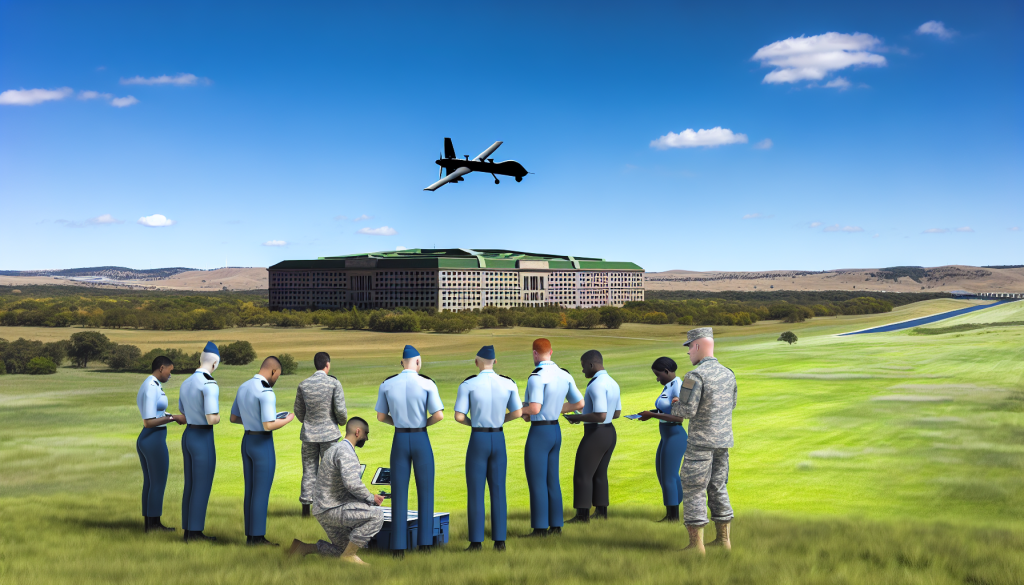Testing Commercial Drone Technology: Marines’ G.I. Challenge at Camp Pendleton
In a critical move towards modernization, the U.S. Marines recently tested and evaluated commercial drone technology in California. This initiative, part of the Defense Innovation Unit’s G.I. Challenge, aimed to assess various drone systems in combat scenarios and guide future military procurement decisions.
The Setting: Camp Pendleton
Camp Pendleton, a hub for Marine training and innovation, hosted the G.I. Challenge event over a ten-day period. During this time, Marines from the 1st Marine Division engaged with industry partners, including drone manufacturers, to get hands-on experience with cutting-edge aerial technology. The soldiers spent the first four days familiarizing themselves with the different drone models. This foundational knowledge was necessary for the subsequent six days when they put the drones through rigorous combat simulations.
Evaluation Metrics
The Marines rated the drones based on several key performance indicators, including:
- Setup Time: How quickly the drones could be prepared for deployment.
- Payload Capacity: The amount of equipment or supplies the drones could carry.
- Endurance: How long the drones could stay in the air before needing to recharge or refuel.
- Performance Across Weather and Terrain: How well the drones operated in diverse environmental conditions.
This comprehensive evaluation process helped provide actionable insights into each drone’s operational capabilities and functionalities.
Image Caption: The event allowed Marines to test the drones in various combat settings and provide user feedback. (US Marine Corps photo by Lance Cpl. Sawyer Carleton)
Impact on Battlefield Tactics
One of the significant focuses of the evaluation was understanding how drones influence battlefield tactics. The Marines explored the drones’ roles in contested environments and their effectiveness in enhancing ‘kill chains,’ which refer to the series of steps taken to engage and neutralize enemy targets. Testing first-person view systems also provided insights into how real-time video feeds can elevate operational awareness in combat scenarios.
Brig. Gen. Michael Nakonieczny, the I Marine Expeditionary Force (MEF) deputy commanding general, emphasized, “The G.I. Challenge puts our Marines at the center of capability development.” He highlighted the partnership between the Marines and industry as crucial for shaping the next generation of unmanned systems essential for modern warfare.
The Road Ahead for Drone Inclusion in Military Operations
This exercise marks the second phase of the G.I. Challenge, following an initial screening of potential drone candidates. The final selection will determine which drones could be included in the Department of Defense’s “Blue UAS List,” a roster that identifies approved systems for military use. Results from this testing phase are expected by March 2026.
Image Caption: A major aspect of adopting more drones in the US military has been closer communication with companies and industry partners. (US Marine Corps photo by Lance Cpl. Sawyer Carleton)
Broader Implications for U.S. Military
The integration of drones into military operations is not just a technological upgrade; it represents a shift in how the U.S. military plans to conduct future warfare. With troops actively engaged in building and flying drones, military leaders are committed to making drone technology a priority. Recent training exercises have yielded significant insights, including successes like the Army’s first drone-on-drone kill, highlighting both the potential advantages and existing challenges.
Despite these advancements, drawbacks like video feed connection issues and equipment maintenance have surfaced during exercises, emphasizing the need for ongoing evaluation and improvement.
Navigating the Learning Curve
Military officials acknowledge that incorporating drones, particularly smaller, uncrewed aerial systems, has been a complex, iterative process. The focus on experiential learning—where troops actively engage with technology—has helped refine capabilities and address challenges that arise in the field. Closer collaboration with industry partners has proven essential for optimizing drone technologies for military applications.
Through continuous testing and evaluation, the U.S. military aims to adapt and innovate in the rapidly evolving landscape of aerial combat and surveillance technologies.

